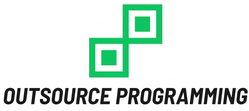In the fast-paced world of product development, agility is more than just a buzzword—it’s a necessity. Companies are constantly striving to innovate and bring new products to market quickly while still meeting customer demands. Agile product development has emerged as a leading methodology, enabling teams to adapt rapidly and embrace change. But what happens when internal resources fall short? That’s where outsourcing steps in.
Outsourcing can be a game changer for businesses looking to enhance their agile processes. It offers unique advantages that can streamline research and development efforts, allowing companies to focus on their core competencies while leveraging external expertise. As we dive deeper into this topic, you’ll discover how outsourcing not only complements agile principles but also accelerates the entire product R&D cycle. Ready to explore the transformative power of collaboration? Let’s get started!
The Benefits of Outsourcing in Agile Product R&D
Outsourcing in Agile product R&D brings a wealth of advantages. It allows companies to tap into global talent pools, accessing specialized skills that may not be available in-house. This diversity fosters innovation and creativity.
Cost efficiency is another significant benefit. By outsourcing, businesses can reduce overhead costs related to hiring and training employees. Resources can be allocated more strategically, ensuring funds are used where they matter most.
Outsourcing offers flexibility. Teams can scale up or down based on project demands without the long-term commitment of additional hires. This adaptability aligns perfectly with Agile methodologies.
Time zones also play a critical role—working across different time zones means development doesn’t stop at the end of the day. Continuous progress accelerates timelines and keeps projects on track.
Collaboration tools today make remote work seamless, breaking barriers between teams regardless of location while enhancing communication and productivity.
How Outsourcing Can Help with Rapid Prototyping and Iterations
Outsourcing can streamline the rapid prototyping process, making it more efficient and cost-effective. By collaborating with specialized teams, companies access a wealth of expertise that may not exist in-house.
These external partners often have advanced tools and technologies at their disposal. This means quicker turnarounds on prototypes. Teams can focus on refining concepts instead of getting bogged down by technical constraints.
With outsourcing, feedback loops become shorter and iterations happen faster. As new ideas emerge, an agile team can pivot quickly without stretching internal resources too thin.
Working with diverse talent introduces fresh perspectives. Different cultures and backgrounds spark innovation that might be overlooked within a single organization.
This collaborative approach allows for continuous improvement throughout the product development lifecycle—ensuring that what emerges is both innovative and user-centric.
Case Studies: Successful Examples of Outsourced Agile R&D
One inspiring example of outsourced Agile R&D is the collaboration between a tech startup and a specialized software development firm. This partnership allowed the startup to tap into seasoned developers who brought fresh perspectives and innovative solutions. The result? A product that was launched weeks ahead of schedule.
Another notable case comes from an established automotive company that sought to enhance its electric vehicle line. By outsourcing specific components of their research, they accessed cutting-edge technology while keeping costs in check. This strategic move empowered them to iterate quickly on designs, ultimately leading to market leadership in eco-friendly vehicles.
A healthcare provider also benefited tremendously by leveraging external expertise for its mobile app project. Outsourcing enabled rapid prototyping, allowing them to gather user feedback effectively and pivot when necessary—something traditional methods often hindered.
These examples illustrate how effective partnerships can lead to remarkable outcomes in agile environments.
Selecting the Right Outsourcing Partner for Your Agile Team
Choosing the right outsourcing partner is crucial for your Agile team. Start by assessing their experience with Agile methodologies. Look for firms that understand iterative processes and can adapt quickly.
Communication is key in any partnership. Ensure they have a transparent communication style, as regular updates are vital in an Agile environment. This helps maintain alignment on goals and timelines.
Evaluate their technical skills and expertise relevant to your project. A strong portfolio showcasing past work can provide insights into their capabilities.
Cultural fit also plays a role. Your partner should share similar values and work ethics to foster collaboration.
Consider flexibility as well; the best partners will adjust to changing requirements without losing momentum or quality in delivery.
Overcoming Challenges in Outsourced Agile Product Development
Outsourced agile product development comes with its own set of challenges. Communication barriers can create misunderstandings between teams, especially when they are distributed globally.
Time zone differences often lead to delays in decision-making. It’s essential to establish overlapping work hours for real-time collaboration.
Cultural differences may also impact teamwork and expectations. Building a strong rapport through regular check-ins helps bridge these gaps.
Quality control remains a significant concern as well. Implementing robust protocols for feedback loops ensures that the end product meets defined standards throughout the process.
Maintaining alignment on goals is crucial too. Regular sprint reviews and retrospectives foster transparency, keeping everyone focused on shared objectives while adapting quickly to changes in requirements or market conditions.
Conclusion: How Outsourcing Can Accelerate Your Product Development Process
Outsourcing can significantly enhance your product development process. By tapping into external expertise, teams can focus on their core competencies while benefiting from specialized skills and resources.
The flexibility outsourcing offers allows for quick adaptation to changing project needs. This is particularly crucial in an agile environment where speed and efficiency are paramount. Accessing a global talent pool means that businesses can leverage innovative ideas and technologies that may not be available internally.
Outsourcing facilitates rapid prototyping and iterations by providing additional bandwidth to the development team. It enables faster feedback loops, enhancing collaboration among diverse groups of professionals who bring varied perspectives.
Selecting the right partner streamlines this entire journey. A well-aligned outsourcing relationship fosters better communication and understanding of goals, ultimately driving successful outcomes.
While challenges may arise during outsourced agile product development, they can often be mitigated with careful planning and clear expectations. Embracing these strategies paves the way for accelerated growth.
Harnessing the power of outsourcing creates opportunities for innovation and agility in product R&D processes—empowering organizations to deliver exceptional products more swiftly than ever before.


Leave A Comment Cancel reply